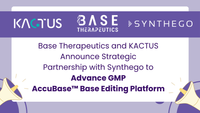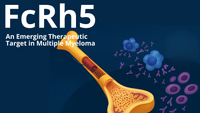Expanding Landscape of TCR Therapies: Clinical Breakthroughs, Formats, and Production Support
By Tingxu Chen
At the 2023 ISCT conference, SCG Cell Therapy announced breakthrough clinical data for its autologous TCR-T cell injection SCG101 in the treatment of HBsAg-positive liver cancer—a milestone underscoring the growing role of advanced proteins and enzymes for cell therapy in enabling next-generation immunotherapies. The partial response (PR) rate reached 66%, with one lesion further shrinking by 74.5% by month 4 and another lesion disappearing completely. These promising clinical results demonstrate the therapeutic potential of HBsAg-targeted TCR-T therapy and mark a significant milestone for T cell therapies in solid tumors. In recent years, TCR therapies have emerged rapidly, achieving continuous clinical breakthroughs and gradually becoming a rising force in the field of immunotherapy.
Figure 1. Selected Clinical Data of SCG101 [1].
TCR Therapy
TCR therapy is a novel form of immunotherapy developed based on the natural recognition pattern between T cell receptors (TCRs) and antigens. Therapeutic formats include adoptive T cell therapy (TCR-T) and TCR-based protein drugs (such as TCR-scFv and TCR mimic antibodies).
TCR-T works by first screening and validating TCR sequences that can recognize specific antigens. These sequences are then genetically engineered into a patient’s T cells, enabling the modified T cells to specifically bind to and kill tumor cells expressing the target antigen. In this context, the “antigen” refers to a complex formed by intracellular antigenic peptides presented on MHC (or HLA) molecules. The structural diversity of MHC complexes and their peptide-binding profiles play a critical role in shaping the specificity and efficacy of TCR recognition. Precise control over the design and composition of MHC monomers and tetramers can significantly impact the reliability of downstream immunological assays and therapeutic validations. Utilizing an MHC complex custom service allows researchers to tailor these complexes to match unique antigenic contexts, thereby improving the fidelity of TCR-antigen interaction studies. Through this unique recognition mechanism, TCR-T can target a broader range of intracellular antigens and has shown particularly promising results in the treatment of solid tumors. The binding affinity and specificity of such TCR-antigen interactions can be quantitatively assessed using techniques like our surface plasmon resonance service, which supports precision in TCR candidate evaluation.
Figure 2. TCR recognizes MHC-peptide complex [2].
High specificity and sensitivity are defining features of TCR-T therapy. It can elicit strong T cell responses even against low-density antigen populations, while also carrying a lower risk of cytokine release syndrome. Additionally, compared to CARs, TCRs typically have lower affinity and faster dissociation rates, allowing for repeated antigen recognition and signal triggering, which helps amplify immune responses.
Figure 3. TCR-T treatment process [3].
TCR-scFv and TCR mimic antibodies represent a new class of protein engineering technologies that develop protein-based therapeutics centered on TCR or TCR-like structures, without the need for gene engineering or adoptive cell transfer. In these applications, the precise expression of custom protein formats, such as engineered TCR components, may benefit from custom protein expression services to ensure structural accuracy and functional performance. This simplifies the manufacturing process and offers a more streamlined treatment option for clinical use. A representative drug is Tebentafusp (brand name Kimmtrak), currently the only approved TCR-based therapy on the market. It simultaneously targets the GP100 peptide–HLA*02:01 complex and CD3.
Figure 4. TCR-like structure [4].
Progress in TCR Therapies
Tebentafusp has shown strong market momentum, generating $55.09 million in revenue in Q1 2023. More importantly, it has significantly extended patient survival and has become the most prescribed drug for HLA*02:01-positive metastatic uveal melanoma. In the U.S., several companies are actively advancing TCR therapies, including TCR² Therapeutics, Lyell Immunopharma, Intellia Therapeutics, and Kite Pharma, with multiple clinical-stage candidates already in development.
Outside the U.S., companies such as Adaptimmune (UK), Immunocore (UK), Medigene (Germany), and RootPath (China/U.S.) are also driving innovation in TCR therapeutics. In 2024, FDA has granted accelerated approval to afamitresgene autoleucel (commercial name ‘Tecelra’, Adaptimmune) for unresectable or metastatic synovial sarcoma. Other clinical-stage pipelines include MDG1011(Medigene), lete-cel (Adaptimmune). In 2023, Adaptimmune and TCR² have announced a strategic merger [5], forming a new company that integrates both SPEAR and TRuC platforms to enable recognition of both intracellular and extracellular targets.
TCR therapy brings renewed hope to the field of immunotherapy for solid tumors, with broad and promising clinical potential. However, it also faces significant challenges, such as the isolation and purification of T cells in TCR-T therapy, the identification of safer and more specific targets, and the need for appropriate HLA matching. These limitations may hinder the development of off-the-shelf TCR-T products, thus affecting accessibility. Nevertheless, these challenges have sparked new avenues of exploration, such as γδ T cell therapies by TC BioPharm and Gadeta, and TCR-NK approaches by Syena. Innovations in targets, technologies, and strategic models continue to shape the unique value of TCR-focused companies.
KACTUS Solutions for TCR Therapy Development
To support TCR therapy developments, KACTUS has established a comprehensive portfolio of services, offering custom expression services for TCRs, TCR-related biologics, and MHC-peptide complexes. These solutions are designed to accelerate drug development for companies working in the TCR therapeutic space.
Our team has successfully expressed Tebentafusp, demonstrating its ability to bind both the GP100 (HLA-A*02:01) complex and the CD3 heterodimer—exhibiting robust dual-binding activity.
Figure 5. In ELISA (left) and SPR (right) analyses, Tebentafusp binds to both the monomeric and tetrameric forms of the Human GP100 (HLA-A*02:01) complex, with an EC₅₀ of 11.8 ng/mL and an affinity constant (Kᴅ) of 0.196 nM.
Figure 6. ELISA results confirm that Tebentafusp binds to both CD3E&CD3D and CD3E&CD3G heterodimers, with EC₅₀ values of 8.7 ng/mL and 0.22 μg/mL, respectively.
In addition, KACTUS MHC-peptide complex products exhibit excellent biological activity, making them ideal for use in immunization or screening studies within TCR therapy development—helping researchers identify the correct molecular sequences.’
Figure 7. ELISA results demonstrate that both the monomeric and tetrameric forms of Human GP100 (HLA-A02:01) can bind to the Anti-GP100 (HLA-A02:01) antibody, with EC₅₀ values of 32.9 ng/mL and 28.3 ng/mL, respectively.
TCR & MHC Products, Services, & Resources
● MHC & TCR Solutions | Brochure
● TCR Detection Using Peptide-Ready MHCs | Case Study
● Engineering MHC Reagents | Poster
● Surfact Plasmon Resonance (SPR) Services | Brochure
For more information, please contact us at support@kactusbio.us.
References
-
Natarajan K, Jiang J, May NA, Mage MG, Boyd LF, McShan AC, Sgourakis NG, Bax A, Margulies DH. The Role of Molecular Flexibility in Antigen Presentation and T Cell Receptor-Mediated Signaling. Front Immunol. 2018 Jul 17;9:1657.
-
Tsimberidou AM, Van Morris K, Vo HH, Eck S, Lin YF, Rivas JM, Andersson BS. T-cell receptor-based therapy: an innovative therapeutic approach for solid tumors. J Hematol Oncol. 2021 Jun 30;14(1):102.
-
Chandran SS, Klebanoff CA. T cell receptor-based cancer immunotherapy: Emerging efficacy and pathways of resistance. Immunol Rev. 2019 Jul;290(1):127-147.













